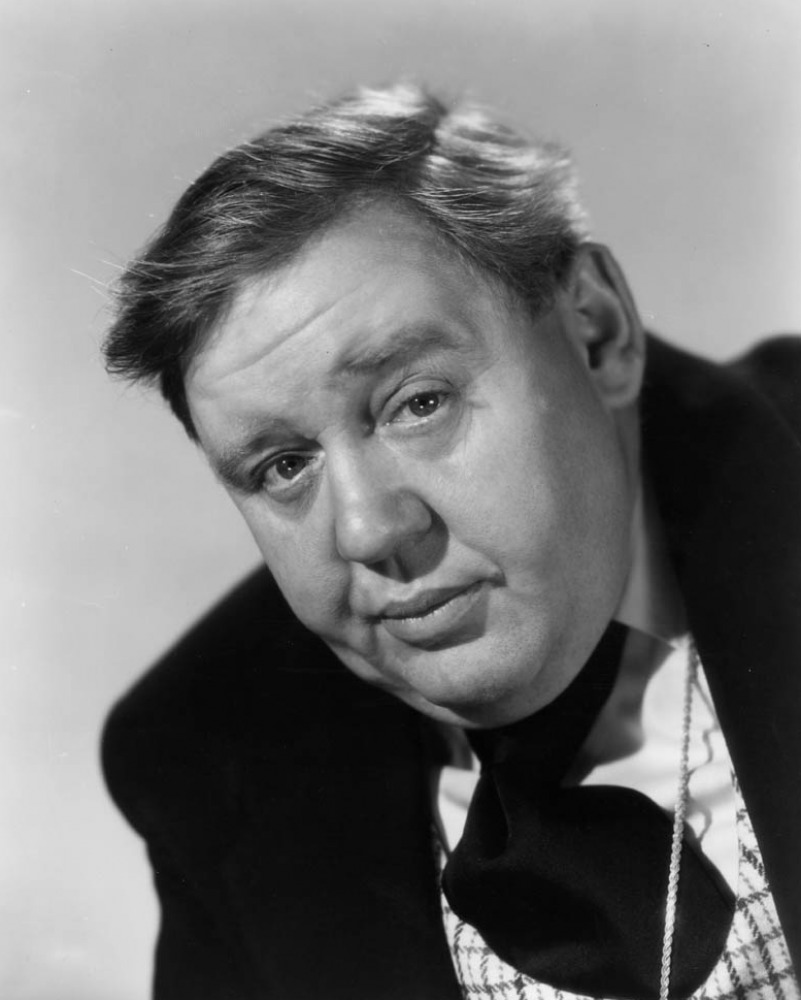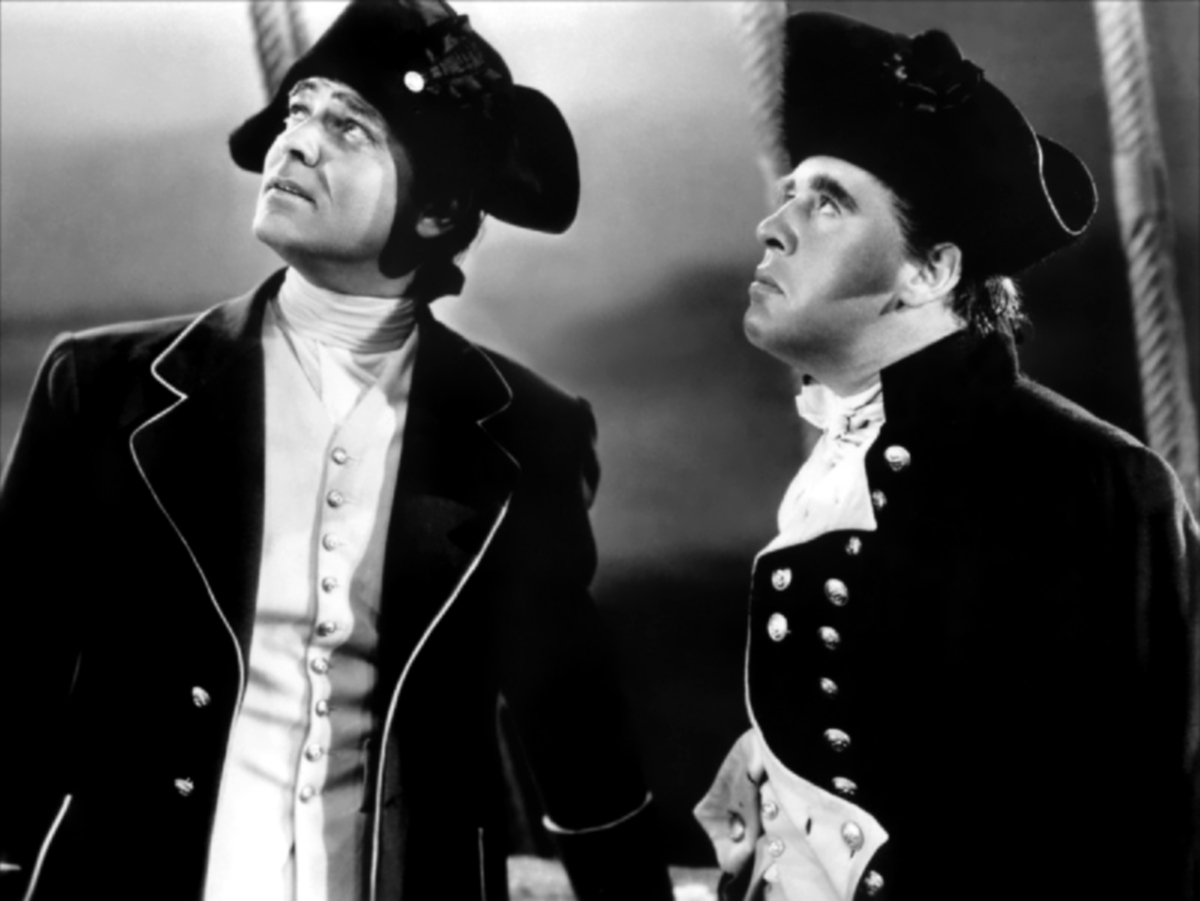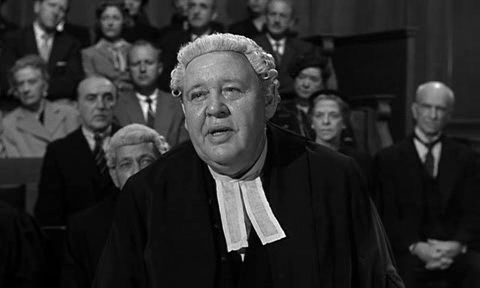
Want to know the best Charles Laughton movies? How about the worst Charles Laughton movies? Curious about Charles Laughton’s box office grosses or which Charles Laughton movie picked up the most Oscar® nominations? Need to know which Charles Laughton movie got the best reviews from critics and audiences and which got the worst reviews? Well you have come to the right place….because we have all of that information.
Charles Laughton (1899-1962) might have been the greatest character actor of all-time. Laughton went from being a hotel clerk to studying at the Royal Academy of Dramatic Art to stage success on London stages to becoming an Oscar® winning actor in Hollywood. Laughton starred in over 50 movies from 1929 to 1962.
His IMDb page shows 65 acting credits from 1928-1962. This page currently ranks 45 Charles Laughton movies from Best to Worst in six different sortable columns of information. Television shows, shorts, cameos and movies not released in North America were not included in the rankings.

Charles Laughton Movies Can Be Ranked 6 Ways In This Table
The really cool thing about this table is that it is “user-sortable”. Rank the movies anyway you want.
- Sort Charles Laughton movies by co-stars of his movies.
- Sort Charles Laughton movies by adjusted domestic box office grosses using current movie ticket cost
- Sort Charles Laughton movies by domestic yearly box office rank
- Sort Charles Laughton movies how they were received by critics and audiences. 60% rating or higher should indicate a good movie.
- Sort by how many Oscar® nominations each Charles Laughton movie received and how many Oscar® wins each Charles Laughton movie won.
- Sort Charles Laughton movies by Ultimate Movie Rankings (UMR) Score. UMR Score puts box office, reviews and awards into a mathematical equation and gives each movie a score.
- Use the search and sort button to make this page very interactive.
Stats and Possibly Interesting Things From The Above Charles Laughtonl Table
- Nineteen Charles Laughton movies crossed the magical $100 million domestic gross mark. That is a percentage of 42.22% of his movies listed. Spartacus (1960) was his biggest box office hit.
- An average Charles Laughton movie grosses $107.20 million in adjusted box office gross.
- Using RottenTomatoes.com’s 60% fresh meter. 33 Charles Laughton movies are rated as good movies…or 73.33% of his movies. Witness for the Prosecution (1957) is his highest rated movie while Girl From Manhattan (1948) is his lowest rated movie.
- Seventeen Charles Laughton movies received at least one Oscar® nomination in any category…..or 37.77% of his movies.
- Four Charles Laughton movie won at least one Oscar® in any category…..or 8.88% of his movies.
- An average Ultimate Movie Rankings (UMR) Score is 40.00. 30 Charles Laughton movies scored higher that average….or 66.66% of his movies. Mutiny on the Bounty (1935) got the the highest UMR Score while Girl From Manhattan (1948) got the lowest UMR Score.

Adjusted Worldwide Grosses on 12 Charles Laughton Movies
- Barretts of Wimpole Street, The (1934) $245.70 million in adjusted worldwide gross
- Bribe, The (1949) $135.90 million in adjusted worldwide gross
- Forever And A Day (1943) $156.30 million in adjusted worldwide gross
- Man From Down Under, The (1943) $85.60 million in adjusted worldwide gross
- Mutiny on the Bounty (1935) $508.50 million in adjusted worldwide gross
- Payment Deferred (1932) $33.50 million in adjusted worldwide gross
- Stand By For Action (1942) $266.20 million in adjusted worldwide gross
- They Knew What They Wanted (1940) $73.30 million in adjusted worldwide gross
- Tuttles of Tahiti, The (1942) $73.40 million in adjusted worldwide gross
- Under Ten Flags (1960) $53.10 million in adjusted worldwide gross
- White Woman (1933) $54.00 million in adjusted worldwide gross
- Young Bess (1953) $183.00 million in adjusted worldwide gross
Academy Award® and Oscar® are the registered trademarks of the Academy of Motion Arts and Sciences. Golden Globes® are the registered trademark of the Hollywood Foreign Press.
Cogerson
So restricting “character actor” to supporting roles only, who would I pick as the best decade by decade.
1920’s—Wallace Beery was a star in the 1930’s. In the twenties he seems, off quite a few roles I have seen him in, to have been mainly a supporting actor, at least in big pictures. He certainly is a top candidate. Another is Nigel De Brulier. This name might be a bit obscure to those not into silent movies, but he seems to have popped into just about every big costume epic in the 1920’s, from The Three Musketeers (as Richeleau) to Robin Hood to Ben Hur to Don Juan to The Beloved Rogue and on and on. De Brulier was never as successful in talkies, but he was Shazam in The Adventures of Captain Marvel.
1930’s–Well, Walter Brennan is a possibility, but I don’t think his most memorable roles are in the 1930’s. Thomas Mitchell might be the best pick just off of 1939 (GWTW, Stagecoach, Mr. Smith Goes to Washington, The Hunchback of Notre Dame, Only Angels Have Wings). But my vote goes to Basil Rathbone. Yes, he had some leads, but his best roles were in support in biggies such as David Copperfield, A Tale of Two Cities, The Last Days of Pompeii, etc. Of course he was at his best as an evil aristocrat with real skill with a sword (but not quite enough).
1940’s–my pick is Gabby Hayes. One of the few actors I can think of who grew to fame in B’s although he would be promoted to supporting Wayne and Scott in A’s.
1950’s–I would put Walter Brennan here as my favorite of his performances is Stumpy in Rio Bravo.
1960’s–Strother Martin (he wins alone for “Liberty! Liberty!” but “What we have here is a failure to communicate.” puts him easily in a class by himself.)
1970’s–John Cazale is a good choice. I also remember Len Montana (Luca Brazzi in The Godfather, but he was barely an actor, yet unforgettable. Apparently Coppola caught him nervously practicing his lines, and decided to put that in the movie, with Brando obviously bored and uncomfortable waiting for him to gets his lines out.)
JOHN
1 Some good choices here John. You’re right about Brennan and although he was prolific since the 1920s my one doubt about naming him best character actor of the 30s is that he didn’t really come into his own until 40s. However the art was still there so maybe what we are really pinpointing is the best character PERFORMANCES of a decade. Good choice in naming Strother Martin – great as Liberty Valance’s ‘stooge’.
2 Since we’re now accepting Bruce’s definition that a character actor is mainly in supporting roles, in relation to character actresses can I now nominate Myrna Loy as “the most successful character actress of all time”?
🙂
Hey John…..good picks….glad to see some of my picks making your comment…as well as even more names…Rathbone, Hayes and Martin. I know Luca Brazzi….but not sure I know him in any other movies.
As for Wallace Beery in my mind he was too big a star….pretty much like my argument against Chaney. But once again my 1920s knowledge is limited….so hard for my to go against Beery or Chaney.
Good conversation starter.
Cogerson & Bob
This discussion led me to look up some definitions–
Wikipedia–“A supporting actor who plays unusual, interesting or eccentric characters.”
Google–“An actor who specializes in playing unusual or eccentric people rather than leading roles.” (but “an actor who specializes in playing unusual or eccentric people” all but defines Lon Chaney but he was playing leading roles. So what do call him?)
Merriam-Webster–“an actor who is known for playing many different and unusual characters.”
(I naturally consider this one the best definition)
Cogerson–“A character actor is someone who rarely gets to be the lead in a movie.”
There is a long winded discussion on google which I won’t bother with, but their examples of character actors are Anthony Hopkins, Dustin Hoffman, and Denzel Washington.
But taking a cue from Bob, I will yield to Cogerson’s definition for the following post on my top character actors decade by decade
Hey John…..this almost sounds like the “film noir” definition that I dealt with when I did our Film Noir page. I went with the broad meaning and included lots of movies…..this of course got my movies pounced on that I included.
Going back to my Reel Characters book….https://www.amazon.com/Reel-Characters-Great-Character-Actors/dp/0940410796 their definition heavily influenced me in my thinking. As for the Merriam-Webster–“an actor who is known for playing many different and unusual characters.” meaning….I think every actor working falls into that category. Even Arnold S. plays different roles…as his Terminator is so much different than this Predator role….and who can forget his almost Oscar winning role in Junior….lol.
JOHN/WORK HORSE/STEVE 1 There is a lot in what John says as for example:
(1)The Duke was undoubtedly a leading man for most of his career but some historians argue that his Genghis Khan and Rooster Cogburn, his General Sherman in How the West Was Won, his Thomas Dunson in Red River and his J B Books in The Shootist were all character parts regardless of what one thinks of the quality of the acting which for me ranged from the sublime (Dunson) to the ridiculous (Khan).
(2) Normally had someone who was not a star played Don Corelone that would have been regarded as a character study and Pacino would have been seen as the leading man in the Godfather. However to ensure the two were not competing with each other for the main actor Oscar and being aware that in those days Al had less chance than Brando Paramount entered Al in the Academy Award competition as a supporting actor and Marlon as a leading actor. Yet the prestigious New York Critics Circle who didn’t have to worry about such factors were tied in declaring Al and Marlon as the two best actors of 1972 so they said a plague on both your houses and gave the award to Larry Olivier for Sleuth as a compromise candidate.
(3) Had a supporting actor played Bogie’s drunken river rat in African Queen it would have been regarded as a character part.
2 However if there is no agreement on common definitions confusion can reign and I think that this is what is in danger of happening on this site – each of us is intent on applying his own criteria. Here are 2 separate official dictionary definitions to which I think Bruce comes closest among us:
CHARACTER ACTING
A character actor/ character actress is a supporting actor who plays unusual, interesting, or eccentric characters. The term, often contrasted with that of leading actor, is somewhat abstract and open to interpretation. In a literal sense, all actors can be considered character actors since they all play “characters”, but in the usual sense it is an actor who plays a distinctive and important supporting role.
CHARACTER ACTOR
An actor who specialises in playing eccentric or unusual people rather than leading roles.
3 May I therefore suggest a compromise to ensure a uniform definition on this site? As Bruce is the host and we are his guests we adopt his definition when submitting posts here but if we wish each of us can insist on his or her own definition if corresponding elsewhere. Fair enough?
HI STEVE
1 To again apply my favourite quote from Dalton in Road House (1989) “Opinions vary.” David Shipman was actually complaining about what you think never existed – Mr Mumbles speaking for 3 hours in a posh English accent which Shipman felt was unnatural and ultimately irritating. However Richard Dreyfus backs you and said it was a disgrace the way critics “put Brando down” for a fine performance. Conversely I recall another portrayal of an Englishman in an epic by a Hollywood great won some rave reviews from critics back in the 1960s – Chuck as Gordon in Khartoum with some critics claiming Heston out -acted Olivier in that movie.
2 In 1955 John Wayne played German Captain Karl Ehrlich in The Sea Chase and one story going around was that knowing they would never get away with having the Duke speak in a German accent the way Mr M did a few years later in The Young Lions Warner Bros though of having someone say of Wayne’s character “Young Ehrlich spent 20 years in the States and that’s why he has an American accent.” In the end I think they just let him be John Wayne and “Frankly my dear [nobody gave] a d**n.!”
BRUCE/JOHN/STEVE – Laughton 3
1 In saying that Brennan and Laughton were different types of character actors I should have explained that I saw Walter’s types of parts as ones that ensured he would remain a supporting actor whereas Charles could do the big showy roles that made him a star for a time. In the remake of Bounty Trevor Howard played a more restrained Bligh and Brando’s Christian was the more showy role – in fact a change that made film historian David Shipman yearn for the return of Clark Gable! It could therefore be said on the one hand that Charles maximised his talents by turning them into stardom. On the other hand historians urge young people in acting classes who wish to become character actors to make Walter Brennan films compulsory viewing for themselves
2 In response to a point of Bruce’s I think that a showy actor can get away with not being on the screen too much and yet be regarded as the star. Again Brando in The Godfather was off screen for large chunks of the time and had a less showy actor/less famous played Don Corelone Pacino might well have been regarded as the star of the picture. As it is both are today still lauded for their contribution and “I’m gonna make him an offer——“ from the Godfather although first spoken by Duke in an obscure western is second to only The King’s famous Gone with the Wind line in list of all time greatest movie lines.
3 Therefore to me Charles was the star of all of his top-billed movies regardless of his actual time on screen and I also regard him as having the actual lead role in Witness for the Prosecution but it was a case of with Power in the movie Charles did not have the box office clout by the 1950s to get top billing. Oh why does that fellow John always start arguments that lead us back to billing! – can he not give it a rest?
“Mr. Christiaaaan!!!”
Bob, I liked Brando’s Fletcher Christian more than Gables and Gibsons. And I also liked Trevor Howard’s Bligh more than Laughtons and Hopkins, so you could say the 1962 Mutiny is my favorite version to date, plus the music score by Bronislau Kaper is absolutely gorgeous. I have the soundtrack album.
Bob, Steve, Cogerson
I am surprised but happy that my rather obvious opinions on Laughton–that he was the top character actor of the 1930’s with his career peaking in the 1930’s but with a comeback in the 1955 to 1962 years–ignited such a reaction from Bob. Laughton was somewhat ignored so this discussion did elicit some posts and reactions.
On character actors–I don’t go with the point of view that a character actor must be a supporting player. My definition is an actor who is not a traditional romantic lead. It is hard for me to see how Lon Chaney could be viewed as anything but a character actor even though he was the star of his movies. He was never in any movie I have seen a conventional romantic lead but is always the lead actor. To me ruling out a character actor being the star is simply to rule out the most successful character actors in the definition of character actor.
I think to some degree it is like what an American judge once said about pornography–“I know it when I see it.” One knows the difference between a leading man and a character star when you see it. Clark Gable was a leading man. Cary Grant was a leading man. Lon Chaney was a character actor. Charles Laughton was a character actor. I understand this comes down to the physical. But that is the way it is. Men like Thomas Mitchell or Broderick Crawford were only in the rarest cases going to be leading men who “get the girl” as they used to say. Think of famous leading men roles. Rhett Butler. Jay Gatsby. Robin Hood. Ben Hur. Think of leading men. Rock Hudson. Burt Lancaster. Harrison Ford. Gary Cooper. Could they be cast in those roles. Yes. Might not in all cases be the best casting but they could respectably play the part. Charles Laughton? Edward G. Robinson? Lee J. Cobb? Wallace Beery? Asking the question answers it.
Of course, many actors move between these categories during their lives. Sean Connery started as a striking leading man, but often removed his toupee and did character turns in his later years. James Mason is another who went from leading man to character man.
I bow to your knowledge of the 1920s….I think I have seen one Lon Chaney movie. I like you mentioning “I know it when I see it.”. In goes closely in hand with “Beauty is in the eye of the beholder”. Everybody has a different view….which is what makes these conversations so interesting….even if you do not agree with them.
James Mason is another quality character actor. Thanks for bringing his name into the equation. 🙂